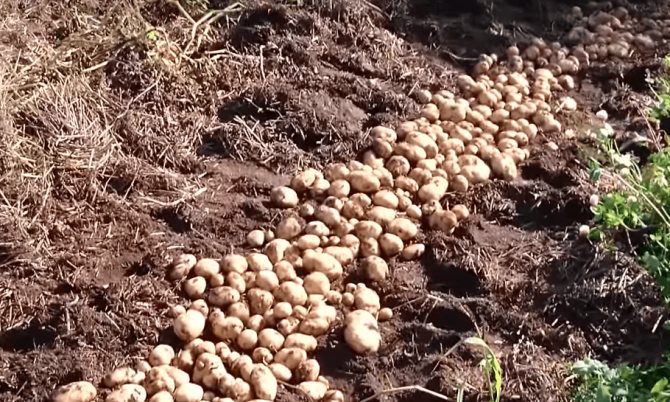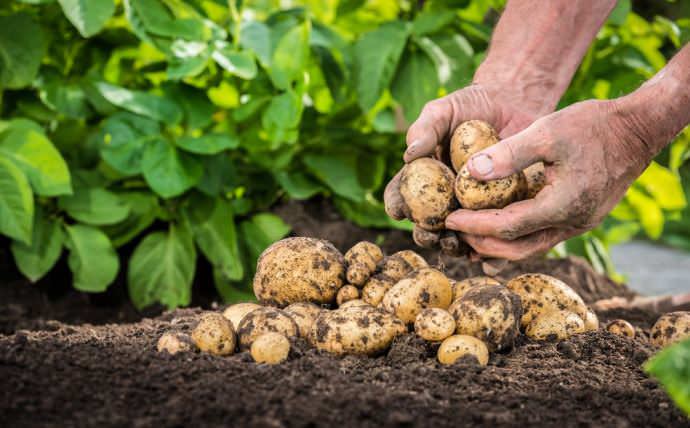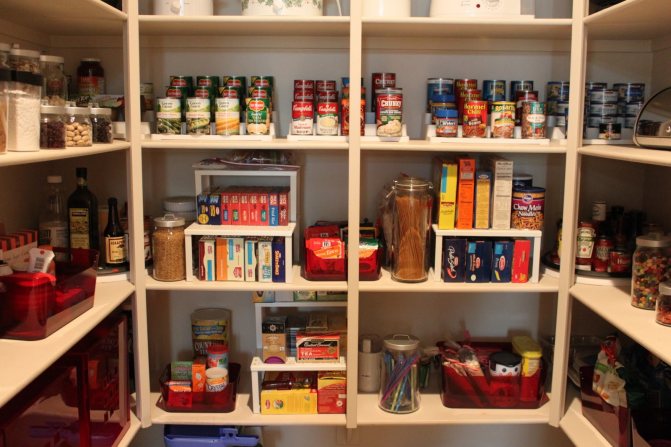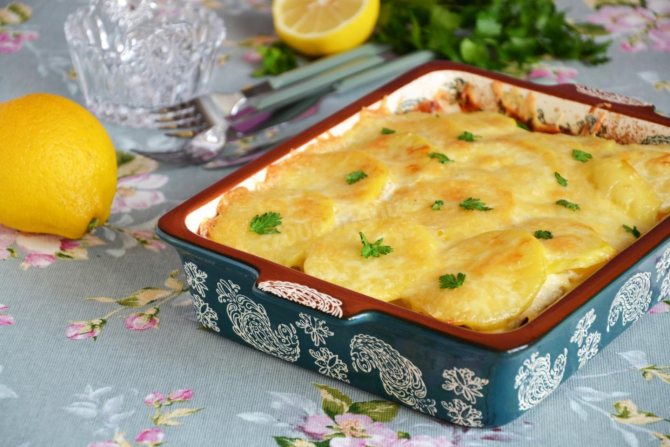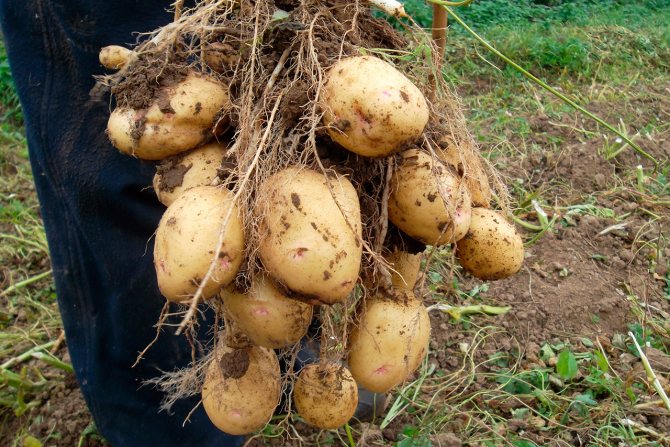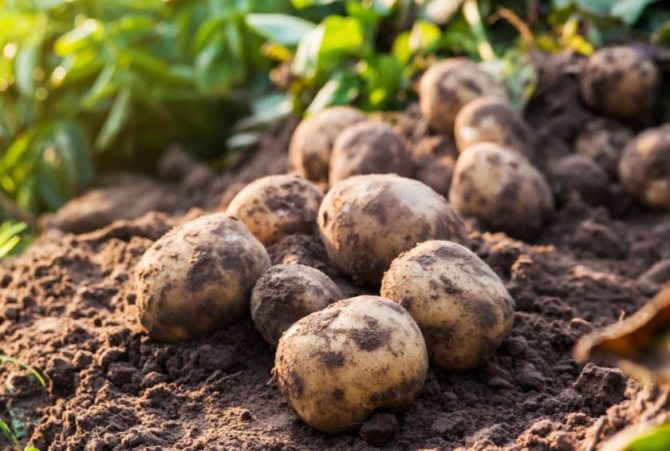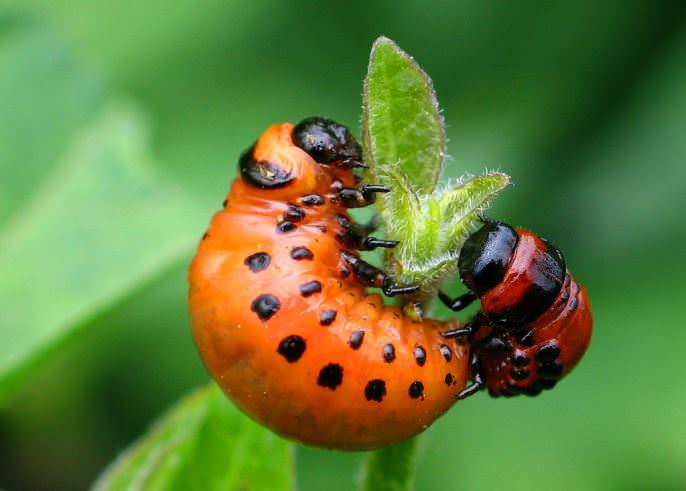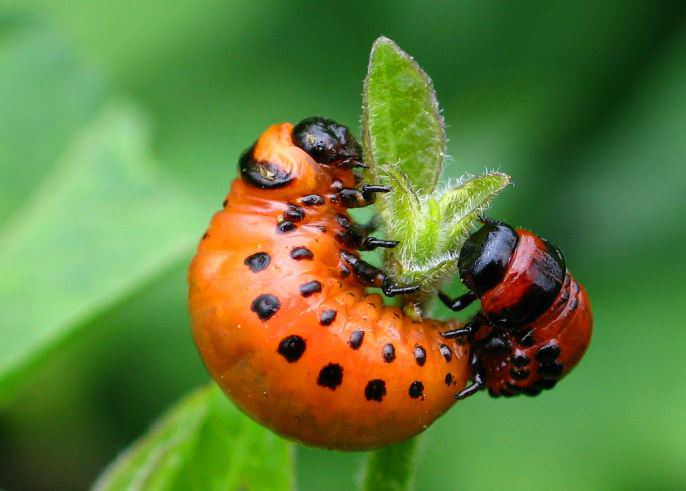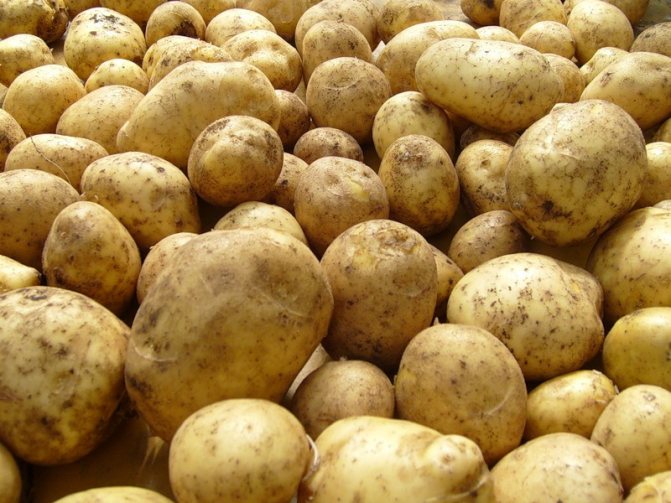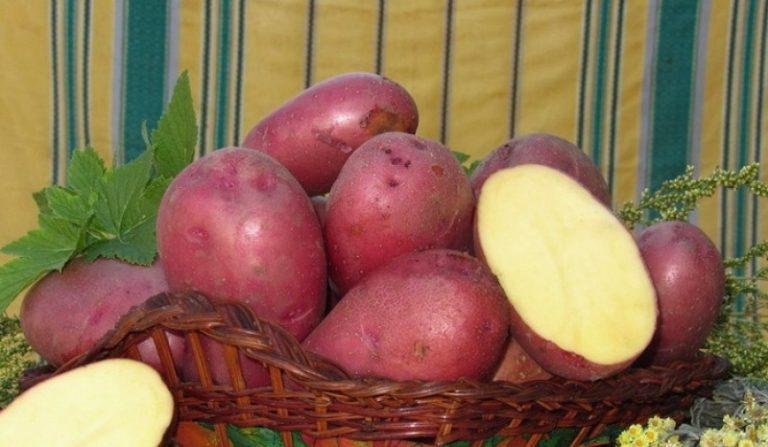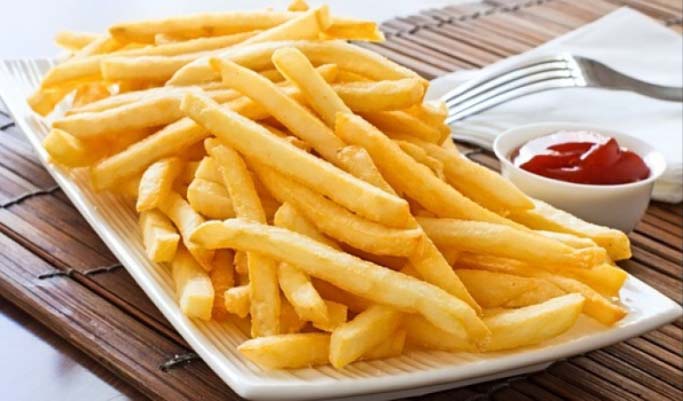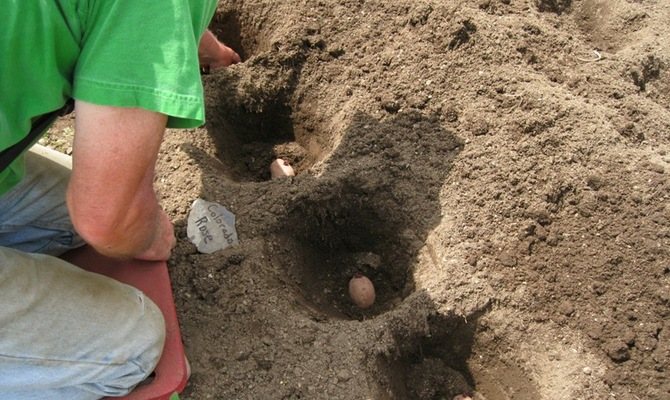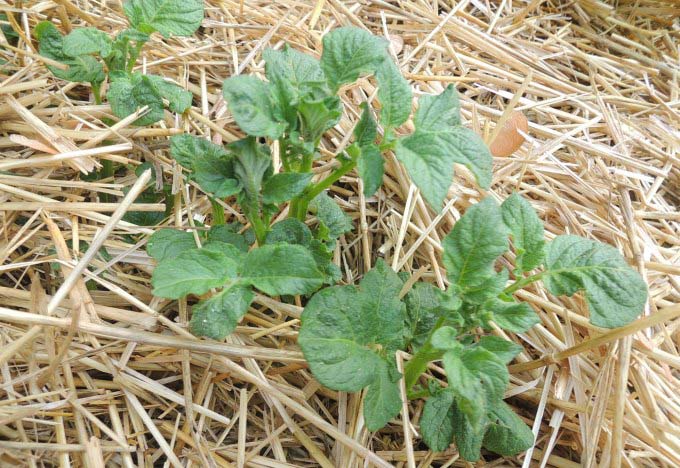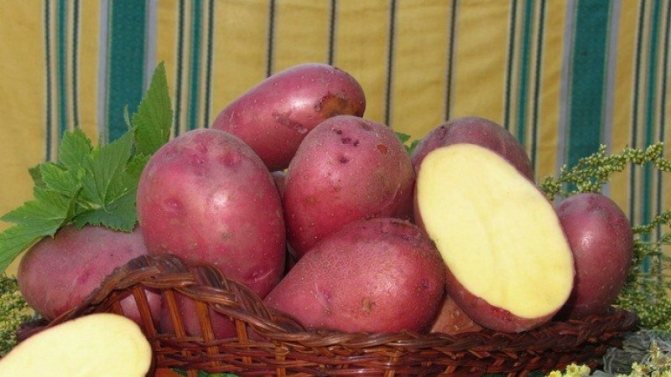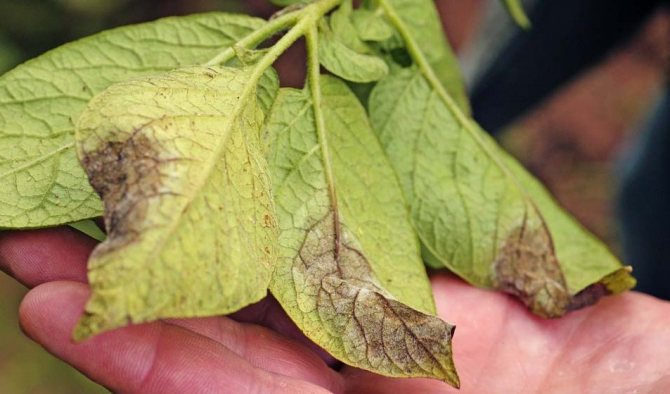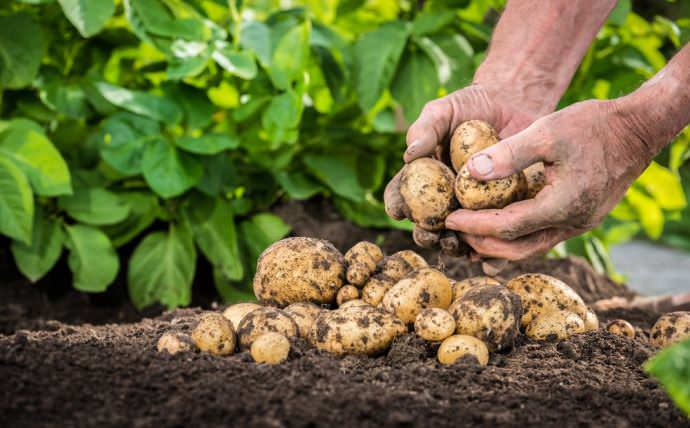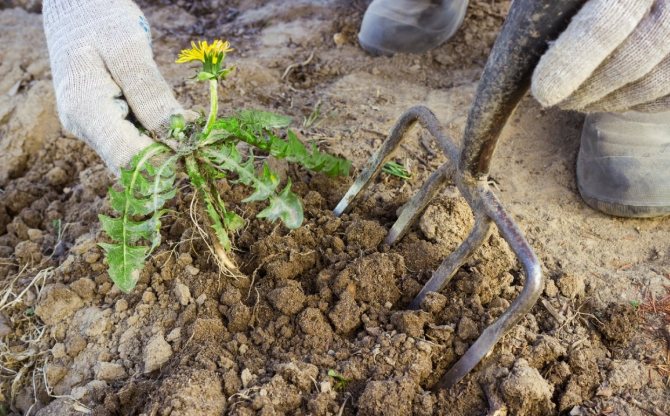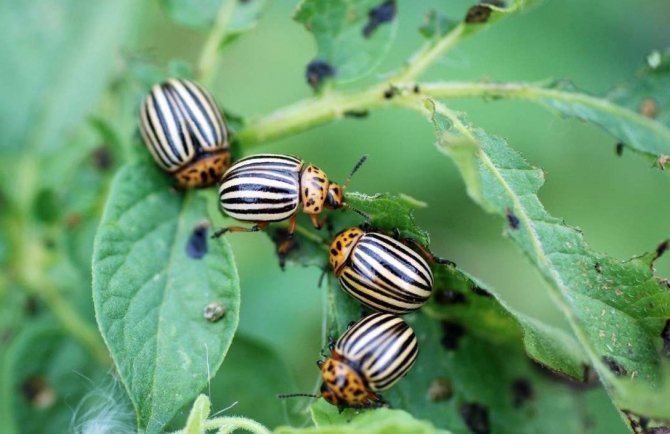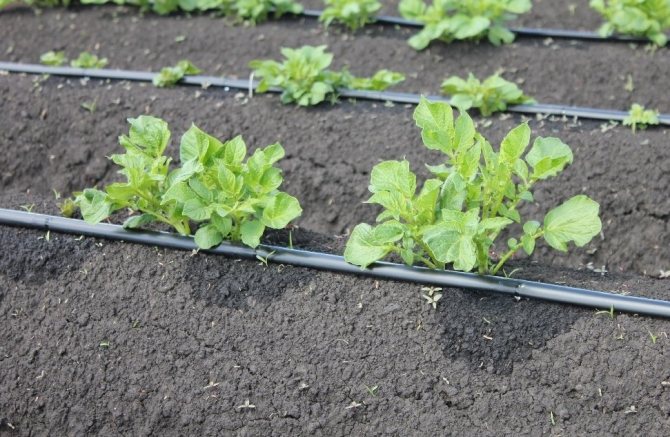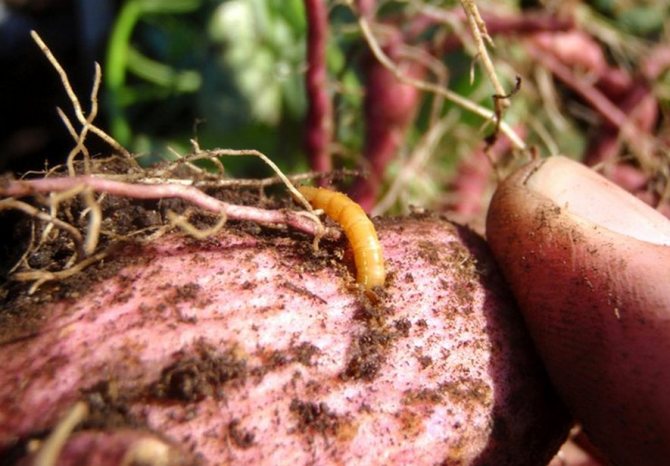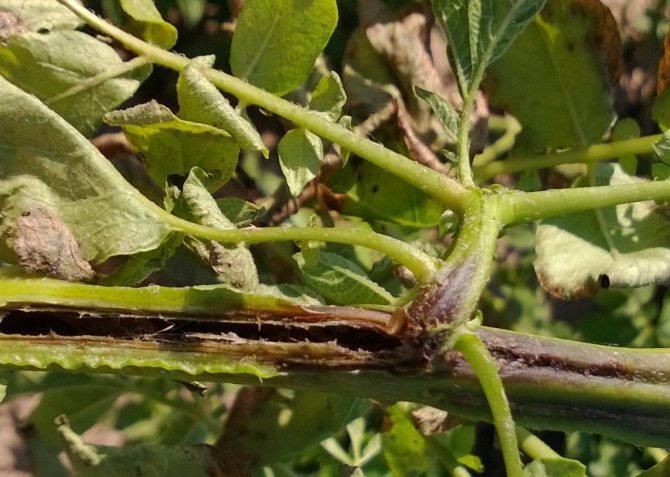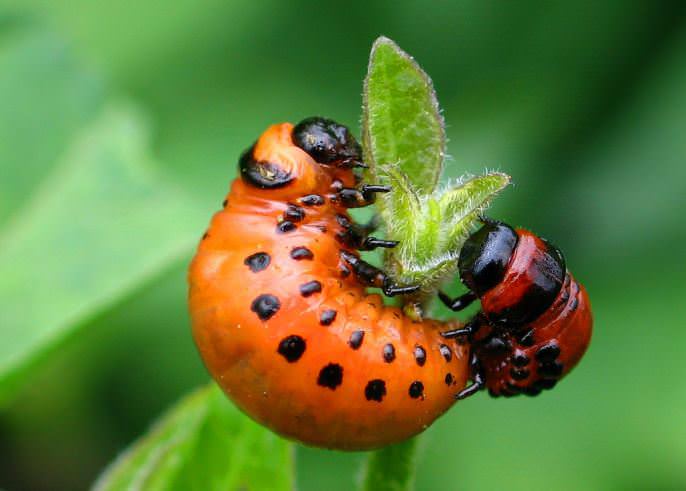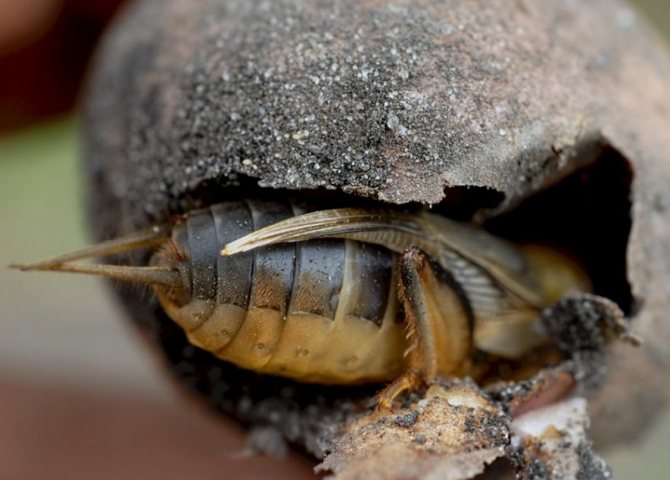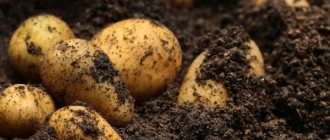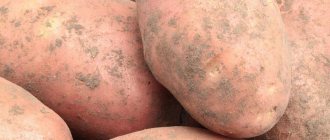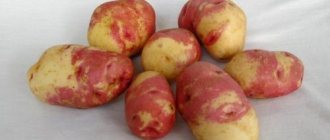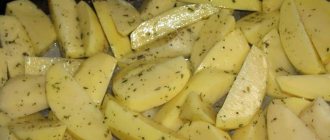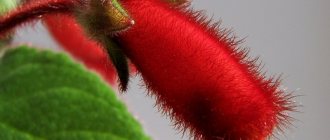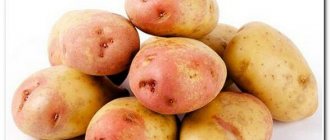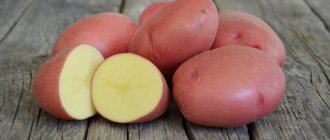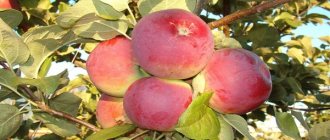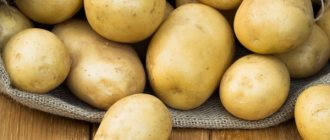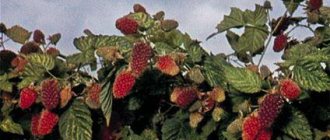Feature and Description
The mid-early variety Laura has already established itself as the best among red-peel hybrids, but a good harvest requires a large percentage of black soil in the soil. In addition, Laura potatoes do not tolerate drought well.
- Appearance:
- Shoots. The bush of this variety reaches large sizes. Stems are erect with dark green foliage, which is located at small intervals, which is typical for this culture. During flowering, a large number of white or light purple inflorescences appear on Laura's potatoes.
- Roots. The root system is well developed, which allows the formation of up to 20 medium-sized oval tubers (70-90 cm). Root crops are dark pink in color with an even surface. Presentation is provided by a small number of eyes. The flesh on the cut is yellow, which indicates a high starch content in the tubers.
- Productivity from 1 hectare. Laura belongs to the mid-early varieties. For sowing, root crops without mechanical damage weighing 70-90 g are recommended. When choosing tubers, you need to pay attention to green spots on the peel, their presence signals that the root crop is sick. The average yield will be from 330 to 500 c / ha, provided that you plant about 42 thousand tubers in well-fertilized soil (according to the originator).
- Taste characteristics. According to the classification of the European Association for Potato Research - Laura is a culinary type "B" and can be used to prepare any dish. Root crops, despite the increased starch content, retain their shape during heat treatment. Potatoes are suitable not only for side dishes and mashed potatoes, but also for deep-frying.
- Chemical composition. The presence of a high content of starch, potassium, phosphorus and vitamins of groups B, C in potatoes makes its juice in demand in the treatment of viral diseases, normalizing blood pressure and lowering blood sugar levels.
- Average tuber weight. During the ripening period from 70 to 80 days, the tubers gain weight from 90 to 150 g, while the starch content in them is 15-17%.
- Marketability. The Laura variety has a dense skin, but during transportation, 10% of the tubers lose their presentation.
- Disease and pest resistance. Laura potatoes, like its predecessor Red Scarlet variety, have average immunity to major potato diseases and viruses.
Attention!Under the influence of sunlight, a poisonous substance, solanine, appears in root crops, which makes it unusable.
- Keeping quality. This variety does not lose its taste and presentation if stored properly. Keeping quality is up to 90%.
- Consumer qualities. This variety has proven itself well in industrial cooking. It is used for the preparation of various semi-finished products, vegetable mixtures and chips, but the delicate aroma and exquisite taste are especially noticeable when deep-fried.
- Growing regions. Laura potatoes are medium early varieties and can be grown throughout the territory of the Russian Federation. But it gives high yields on light, fertilized soils of the Central and Northwestern regions of Russia.
Planting potatoes
There are several ways of planting potatoes, but as a rule, two main ones are used - this is a ridge or smooth method.With the ridge method, first you need to prepare the soil - carefully dig up the selected area, then clear the soil of weeds and level it with a rake (crushing large pieces of earth). If the soil is not too fertile, and also to increase the yield, it is advisable to fertilize the soil with humus or manure.
Then you should trim the soil with a rake. Then it is necessary to make holes for planting tubers using a shovel or cultivator. According to the technology, it is best to plant from 5 to 7 tubers per one running meter. With this planting, the maximum yield can be obtained from the Laura variety. After the tubers are placed in the ground, you can add a little water (only if the soil is dry). After watering, the soil should also be trimmed.
Photo
Below you will see photos of this variety of potatoes:
Advantages and disadvantages
Advantages of the variety:
- good productivity;
- beautiful presentation of tubers;
- excellent taste;
- juice has healing properties;
- good immunity to various diseases and viruses;
- keeping up to 90%.
Disadvantages:
- for high yields, potatoes must be grown on light fertile soils;
- the variety is picky about watering;
- the Laura variety does not tolerate the herbicide Metribuzin well.
Tips from experienced gardeners and reviews about the Nikulinsky variety
The variety has a lot of fans, noting its unpretentiousness and high yield. However, this variety is not suitable for everyone in terms of taste.
Irina, Voronezh: “The tubers cook quickly and well during cooking, do not lose their appearance when exposed to air and are easy to clean. For me, this is the best variety, because for the entire planting season, there was no pain and no trouble ”.
Mikhail, Novosibirsk: “Nikulinsky is not a bad variety, but it attracts the Colorado potato beetle. This is not the first time I have to deal with this scourge, but beginners can get confused. The beetle destroyed half of all the plantings of the neighbors at the dacha ”.
Valentina, Krasnodar: “My advice to you is that if you plant Nikulinsky at your dacha, add fertilizer to each hole at once. Then the tubers will be bigger and the bushes will definitely not hurt. I sprinkle ashes, then during the season I feed two more times with complex fertilizers with irrigation. "
Comparison table
| Potato variety | Tuber weight (g) | Productivity (kg / ha) | Starch content (%) |
| Laura | 90-150 | 330-500 | 17 |
| Vega | 86-120 | 230-380 | 13 |
| Luck | 100-150 | 400-430 | 13 |
| Karatop | 90-100 | 420-450 | 14 |
| Yanka | 90-105 | 195-311 | 15 |
| Riviera | 115-140 | 134-225 | 16 |
| Santa | 100-120 | 270-500 | 12,5 |
| Red Scarlet | 60-125 | 164-192 | 15 |
Growing
Inventory
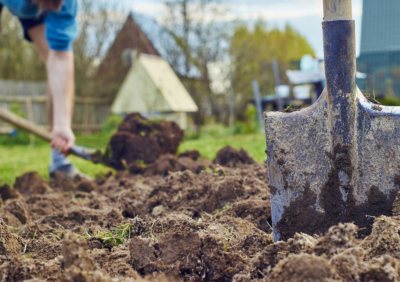
For planting potatoes in small garden plots, it is better to use manual labor, which means that you will need a time-tested garden inventory:
- bayonet shovel;
- a special shovel for harvesting potatoes or a pitchfork;
- hoe;
- hand hoe;
- rake.
Soil preparation
Laura potatoes need fertile soil to get a good harvest. therefore it is necessary to prepare the soil in the fall, scattering manure or other organic fertilizers over the site, and then they dig everything up thoroughly. In the spring, the soil is cultivated again and a small amount of nitrogen-containing fertilizers is added.
Preparation of planting material
- For planting, choose medium-sized tubers (the size of a chicken egg). Root crops must have the correct shape without mechanical damage and signs of disease.
- 10-12 days before planting, the tubers must be germinated - this will ensure the uniformity of seedlings.
- After germination, the tubers must be treated with preparations containing copper, zinc or manganese. Gibberellin solution is very suitable for seed treatment.
Boarding time
The best time to plant this variety in central Russia is mid-May, by this time, the soil warms up to a temperature of 10-12 ° C, which will ensure friendly germination.
Scheme
Our gardeners use two methods of planting potatoes - ridge and smooth. With any of these planting methods, it is important to adhere to the following rules:
- no more than 5 root crops are planted per one running meter;
- the depth of the hole is about 20 cm;
- row spacing - at least 60 cm.
It is advisable to add humus mixed with wood ash to the hole.
Care
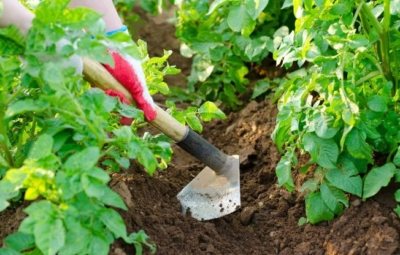

Laura potatoes require careful care from the gardener, and it will be difficult for a beginner to grow a good harvest, but everyone will be able to satisfy personal needs.
- Hilling. As soon as the first shoots appear, it is necessary to carry out continuous harrowing, and throughout the vegetative cycle, the tops should be hilled and the soil should be loosened.
- Watering. Laura does not tolerate drought well. For the normal formation of tubers, the soil must be moist. This can provide automatic watering.
- Loosening and weeding. It is advisable to carry out these two activities at the same time once a week before watering.
- Top dressing. During the intensive growth of tops, potatoes must be fed with nitrogen-containing fertilizers, but for the growth of tubers, a high potassium content in the soil is necessary. For this, it is advisable to feed the plants with potassium magnesium.
- Other care measures. The gardener must follow the correct crop rotation, so legumes, cabbage, cucumber, zucchini or beets should be the best precursors for potatoes.
How to properly care for the variety
Nikulinsky type of potato is one of the most versatile in terms of growing conditions. The main quality that ensures this fame is the stability of the crop, independent of weather conditions. However, this culture also needs to follow a few simple rules of care.
Watering features
The heat-resistant variety Nikulinsky loves warm and moist soil. In total, the plants are well watered about five times a season, with drought or extreme heat, the number of waterings increases.
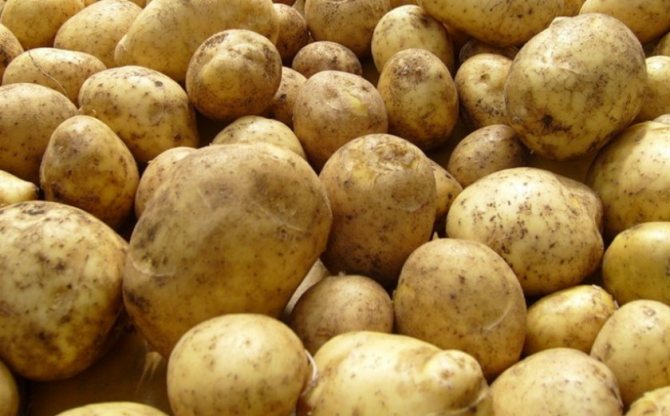

Adequate watering is one of the main guarantees for a good harvest.
In order for the soil to retain moisture longer and not dry out, mulching is performed between the rows and individual plants.
Top dressing and fertilization
The peak of dressing is at the height of the growing season. Herbal infusions, diluted compost, a solution of exclusively stale chicken droppings and agricultural chemicals are used. All these fertilizers are applied in liquid form, organic matter is used in the proportion of 1 liter of waste per 10 liters of water.
Some gardeners replace watering with this. However, it is not recommended to let the soil dry out or to make the number of fertilizing applications prevailing over the amount of soil moisture when replacing them. After top dressing, the soil is usually watered with clean water.
Additional Information! Timely fertilization of Nikulinsky's potatoes increases the yield by one and a half times, contributing to better preservation of table properties and durability of tubers.
Hilling and weeding
The beds of potato bushes are regularly and deeply loosened between the plants, improving the permeability of the soil. Shortly before the beginning of budding, they begin to huddle. These measures prevent the spread of weeds; during hilling, the soil must be moistened. After that, it is mulched between the beds with matted wood shavings, crushed chips and humus.
Diseases and pests
Fight
Laura is genetically immune to virus Y, late blight, leaf curling and scab, but after flowering, with improper care, it can be attacked by a nematode. Diseased bushes are removed and burned, the holes are treated with Bordeaux mixture.
Advice
To combat the Colorado potato beetle, you can spray the bushes with kinmix.
Prophylaxis
It is advisable to change the planting site every three years, while using high-quality seed. During the vegetative cycle, it is advisable to treat the plants with anti-phytophthora drugs - Cuproxat or Pilon.
Positive properties
- Unlike most mid-early varieties, which do not last long, the laura variety can be stored and retain its beneficial qualities for a fairly long period of time. As a rule, about 95% of tubers are perfectly stored throughout the year, subject to temperature conditions ranging from 1 to 3 degrees in a dark, ventilated place.
- The considered variety has in its cells a significant natural reserve of resistance to various viral diseases, such as: the Y virus, nematode and leaf roll. Laura has an increased resistance to late blight (both tubers and shoots). In general, the characteristic of the Laura variety is only positive.
- The variety is quite resistant to various kinds of diseases that can occur during the ripening of the fruit.
- The fruits do not change their taste and color during heat treatment.
Harvesting and storage
Laura potatoes have a strong peel, which makes it possible to store root crops for a long time, but when digging, care must be taken, since this hybrid is afraid of mechanical damage. Tubers are stored in a well-ventilated room at a temperature of no more than 3-5 ° C.
Among the gardeners of the Russian Federation, the Laura variety has not yet gained such popularity as its predecessor, the Red Scarlet potato, but gradually its taste qualities, revealed when deep-fried, will win their fans among Russian farmers.
If you find an error, please select a piece of text and press Ctrl + Enter.
We tried to write the best article. If you liked it, please share it with your friends or leave your comment below. Thank you! Excellent article 0

